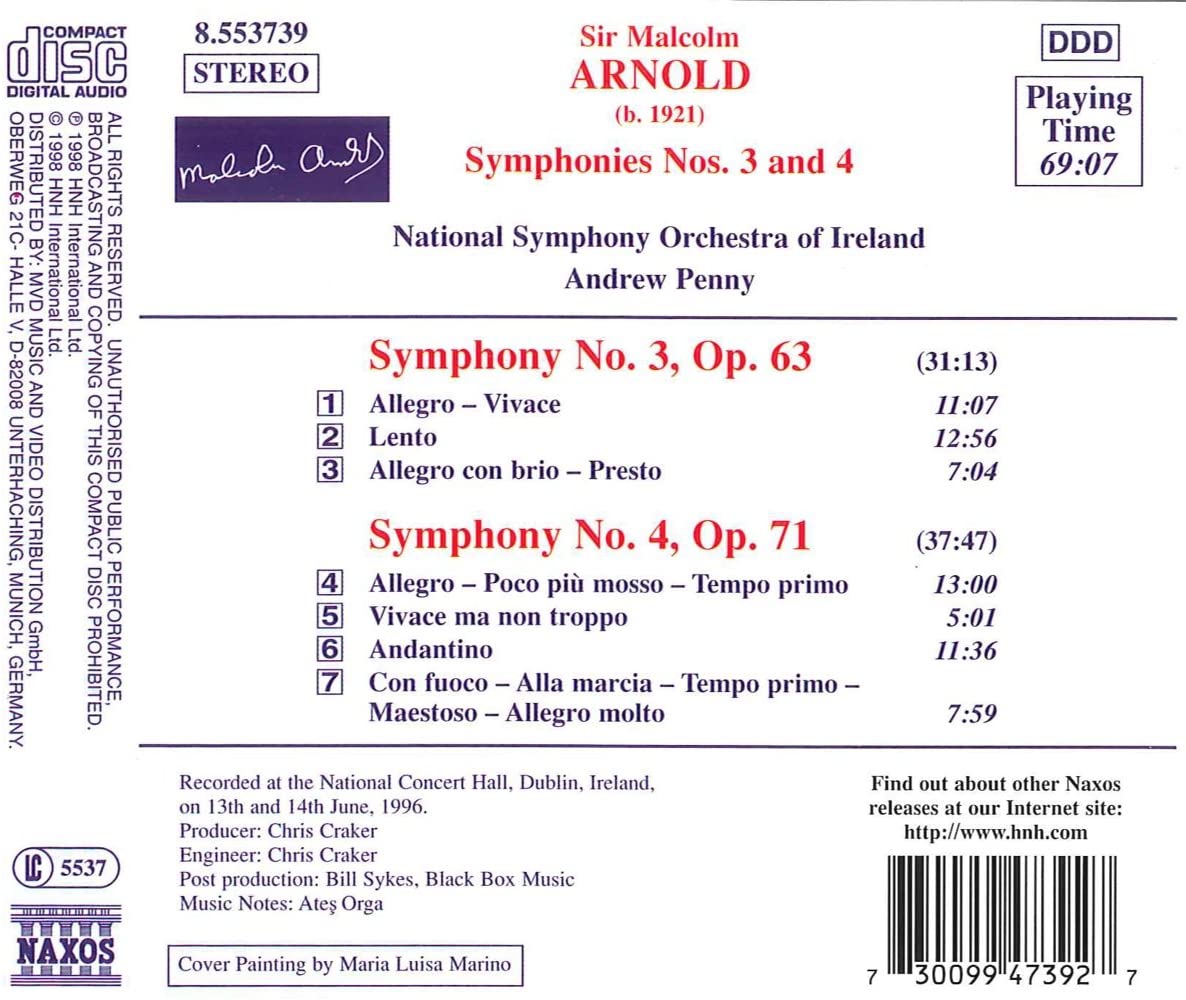
kompozytor
Arnold, Malcolm
tytuł
ARNOLD: Symphonies nos. 3 & 4
wykonawcy
Penny, Andrew;
Ireland National Symphony Orchestra
Ireland National Symphony Orchestra
nr katalogowy
8.553739
opis
The Third Symphony (1954-57) was first performed in the Royal Festival Hall, London, by the Royal Liverpool Philharmonic Orchestra under John Pritchard on 2nd December 1957. In three movements, the score calls for piccolo, double woodwind, four horns, three trumpets, three trombones, tuba, timpani and strings. According to the composer's own original programme note, "the first movement has two main subjects, the first of which is played by the violins, violas, flutes and bassoon at the very outset of the piece. Later on the second subject is first stated by the oboe accompanied by violins. Towards the end of the movement the tempo abruptly changes [from Allegro to Vivace] and the same material is developed as a scherzo. The [passacaglia] second movement, elegiac in character, is a set of [twenty] variations based on a series of chords more than a melodic theme. The [Haydnesque] last movement is based on three main themes and could be loosely described as a rondo." The Sibelian sub-plot of the work Arnold attributes to the telescoped structure of the first movement, and the presence of "a recurrent leitmotif" redolent of Sibelius's Fifth Symphony, likewise the Franck D minor Symphony (both of which, within a fortnight, he played with the London Philharmonic Orchestra in February 1944). •
Commissioned by William Glock and the BBC, the populist Fourth Symphony, completed in Thursley, a Surrey village between Godalming and the Devil's Punch Bowl on 13th July 1960, was first performed in the Royal Festival Hall by the BBC Symphony Orchestra under the composer on 2nd November 1960.
In four movements, with the scherzo placed second, the score calls for piccolo, double woodwind, contra-bassoon, four horns, three trumpets, three trombones, tuba, timpani, percussion, celesta, harp and strings "This symphony," wrote the Arnold in his programme note for the first performance, "is composed for a normal symphony orchestra [but with] extra percussion instruments which have been used for years in West Indian and South American popular music [including bongos, marimbaphones and tom-toms]."
nośnik
CD
gatunek
Muzyka klasyczna
producent
Naxos
data wydania
10-03-1998
EAN / kod kreskowy
730099473927

(Produkt nie został jeszcze oceniony)
cena 58,00 zł
lubProdukt dostepny w niewielkiej ilości.
Wysyłka w ciągu 3 dni roboczych
Darmowa wysyłka dla zamówień powyżej 300 zł!
Darmowy kurier dla zamówień powyżej 500 zł!
sprawdź koszty wysyłki









































